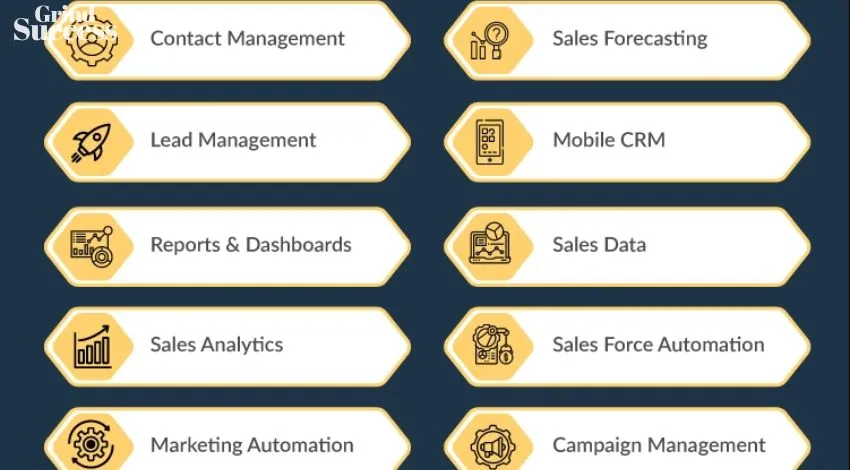The Difference Between a Conventional CRM And a Real-Time CRM
Every industry has become more and more competitive over the years, and the algorithms for creating an excellent customer service experience keep changing.
CRM Software is no longer limited to guiding businesses to construct the right sales workflow balance to reach demand but is also used to increase customer engagement.

Some of the best CRM Software with next-generation AI-based features are capable of producing better business opportunities by giving a closer look at various aspects of customer relationships. Real-time CRM software pulls detailed information about each customer by creating a smooth two-way relationship.
This article will explain the details of modern real-time CRM software and how it differs from traditional CRM.
What Is The Functionality Of Realtime CRM Software?
Realtime Customer Relationship Management (CRM) is a great tool to quickly hold on to fluctuating market conditions and assemble maximum information on customers.
Instant CRM analytics helps to initiate customer requests rapidly. Meanwhile, it also maintains the dignity of the decision-making process in businesses.

Based on the data collection, customer relationship management software runs calculations and algorithms to provide the best possible options for businesses to provide the right service to consumers.
In addition, a real-time customer relationship management dashboard offers multiple features to build a robust connection with the customers.
Which Is The Best Option Between Conventional CRM Software & Real Time CRM Software?
Customers are the actual runners of today’s business. To keep up with their ever-changing demands, small or big, a firm must constantly stay in touch with targeted audiences to grasp up-to-date 360-degree views and their demands and successfully implement the analytics to complete the sale.
Businesses need agility and adaptability to observe and proactively convert the new transition into commercial benefits. Let’s look at different assisting approaches of traditional CRM and real-time CRM in businesses.
Functionality:
Traditional CRM involves customer communication according to a firm’s perspective and convenience. Traditional CRM is limited to one-way activities. Such activities revolve around advertising and updating targeted audiences about upcoming and current products and services manually or using a simple spreadsheet entry.
Traditional CRM predicts market demand based on information from a group of smaller audiences. However, the output can be wrong due to inaccurate and limited case studies.
Modern digital tools like CRM software acts as a good Bible for retail and supply chain businesses because the system provides blueprints for inviting new, retaining existing, and turning potential customers into regular customers.
Real-time CRM provides users with a comprehensive customer audit trail. Such data helps companies study customer behavior in numerous situations to enforce, forecast, and leverage market stipulations in their favor.
Customer Database Management:
Traditional CRM manually collects massive information on targeted audiences and enables the team to plan, execute, and deliver products and services to consumers. This process is prone to errors resulting in mismanagement.
Next-generation real-time CRM works in a comprehensive way that generates a one-to-one connection with customers to understand their desires and guides production, marketing, and sales teams to approach a particular customer in a specific manner.
Inter-Department Functionalities:
Traditional CRM focuses on certain groups of customers. The system pays attention to implementing and streamlining production activities, so the customers are delivered goods and products at a promised time.
Workflow models of vivid departments instruct employees to follow a particular schedule to achieve expected sales and profits. Perfection in production often leads to a mismatch between demand and stock availability, which can eventually affect.
sales and customer experience:
Realtime CRM offers information on current trends and explains how to meet customers’ expectations after having a detailed analysis of the targeted audiences.
Customer relationship management tools are packed with features that allow the sales team to take surveys and feedback from current and potential customers and offer such data to businesses, making it easy to target and fulfill such customers’ needs.
According to the provided information, management decides on different operations for production activities and hires knowledgeable employees to enhance performance.
Seamless Communication & Coordination:
Traditional CRM follows a systematic pattern in which companies keep customers informed about their products to bring them back or retain them. But, this can work well for smaller businesses with less customer base.
Managing such activities becomes tiresome for medium or large companies, where the number of customers is more, and can lead to errors. In such a situation, traditional CRM methods fail to connect with customers in a personalized way and thus focus more on selling the product and less on customer satisfaction.
AI-based real-time CRM seamlessly connects a business and customers. CRM software automatically updates strategies, customer feedback and reviews, trends, market’s nature based on the inputs given and accordingly helps transform business activities to grab lucrative opportunities.
Personalized Experience:
Traditional CRM gets in touch with consumers through cold emails, general notifications, news alert popups, newsletters, phone calls, sales meetings, advertisements, etc.
However, traditional CRM communication systems are time bound to specific business days and hours. Besides that, the customer service department is specially appointed to correspond with customers for their various queries.
Online Real-time CRM keeps evolving according to the demand of the customers. Moreover, real-time customer relationship systems are customer-centric and focused on delivering customers a personalized experience.
Based on a customer’s shopping history, CRM tools update customers about what’s new, notify the availability of products on their wishlist, suggest similar products, etc.
The best part is that this digitally managed process via CRM tools can always be with customers and brands and instantly get resolutions.
Marketing & Sales:
Traditional CRM’s target is to get the same audience back for more purchases as it is geographically limited. This method is product-centric, and the sales team’s strategies involve commercial emails, discount advertisements, etc.
The marketing team invites and influences customers into buying products and creates a market for them. This method can backfire as the market’s needs can differ from what companies have to offer. Social CRM predicts customer behavior based on their involvement with the company.
The system initiates sales after understanding different aspects of a customer, such as a browser history, last shopping details, wish lists, etc. Real-time CRM’s engagement policy incorporates customer satisfaction by offering what is optimal for individual customers.
Social media marketing plays a more significant role. Sales with the new generation of customer relationship management software are specific and data-driven, so it becomes smoother to manage existing and new customers.
To Conclude
Traditional CRM is losing its power and will become obsolete. More and more industries are opting for modern-day CRM software to eliminate customer service expenses, create a clearer vision for marketing and sales teams, increase ROI margins, cost-effectiveness, etc., and deliver exceptional customer service.
An integrated CRM software tool makes an enterprise’s workflow smoother due to accurate and efficient data collection and inter-departmental coordination. Real-time CRM generates flexibility for your business and gives you a chance to stand in the market to prove that you are a worthy component.
